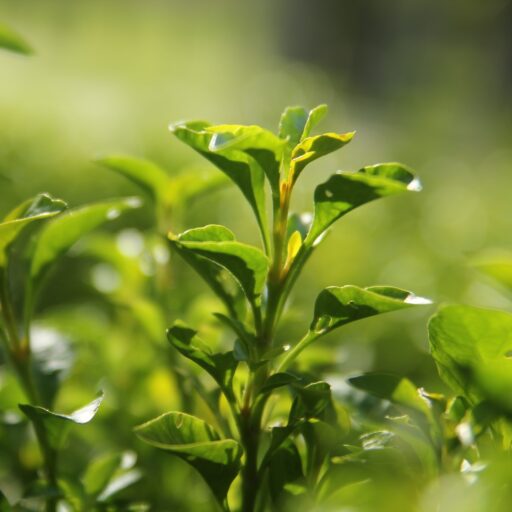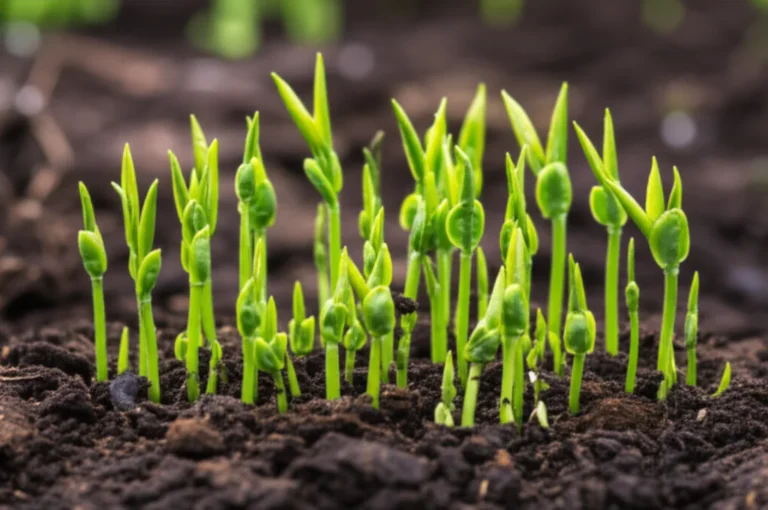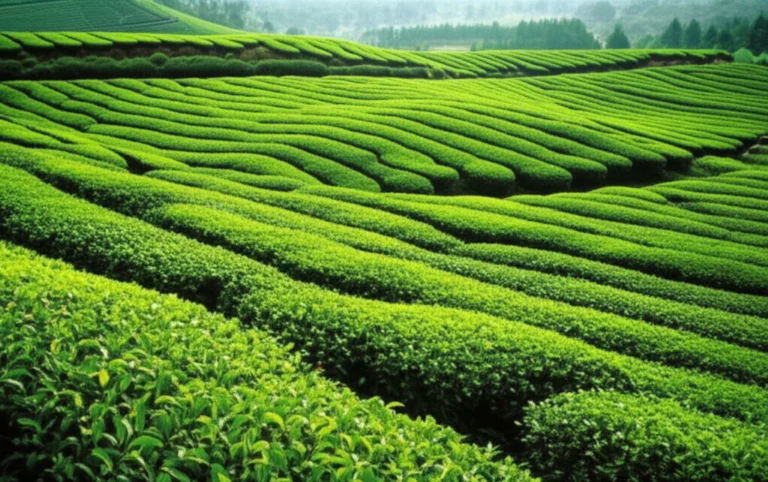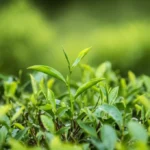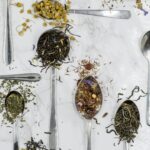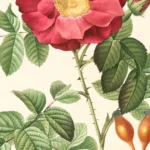Support our educational content for free when you purchase through links on our site. Learn more
7 Essential Tea Plant Pollination Methods You Need to Know 🍃 (2025)
Have you ever paused to wonder how the delicate tea flowers in your garden transform into the lush leaves that brew your favorite cup? At Growing Teas™, we’ve uncovered the fascinating secrets behind tea plant pollination methods — a world buzzing with bees, fluttering butterflies, and even cutting-edge robotics! Whether you’re a home grower or an aspiring tea breeder, understanding these pollination techniques is the key to unlocking healthier plants, richer flavors, and sustainable harvests.
Did you know that most tea plants can’t fertilize themselves? This biological quirk, called self-incompatibility, means they rely heavily on cross-pollination — nature’s way of mixing things up for the best genetic results. Later in this article, we’ll reveal how hand pollination can help you take control of this process, plus insider tips on creating a pollinator-friendly garden that thrives year-round. Ready to dive into the buzzing world of tea pollination? Let’s get started!
Key Takeaways
- Tea plants mostly require cross-pollination due to self-incompatibility, making pollinators essential for seed production and genetic diversity.
- Bees are the primary natural pollinators, but butterflies, birds, and even wind play supporting roles.
- Hand pollination is a powerful technique for breeders and small-scale growers to control genetics and improve seed set.
- Environmental factors like weather and ecosystem health significantly impact pollination success.
- Sustainable pollination practices protect pollinators and ensure long-term tea garden vitality and quality.
Ready to master these methods and boost your tea garden’s productivity? Keep reading for detailed insights, step-by-step guides, and expert tips from the Growing Teas™ team!
Table of Contents
- ⚡️ Quick Tips and Facts About Tea Plant Pollination
- 🌱 Tea Plant Pollination: Origins and Botanical Background
- 🔍 Understanding Tea Plant Reproduction and Flower Biology
- 🌸 1. Natural Pollination Methods in Tea Cultivation
- 🛠️ 2. Artificial Pollination Techniques for Tea Plants
- 🌿 3. Environmental Factors Affecting Tea Plant Pollination Success
- 📈 4. Pollination and Its Effect on Tea Yield and Quality
- 🌍 Sustainable Pollination Practices in Tea Farming
- 🤔 Common Challenges and Solutions in Tea Plant Pollination
- 📚 Recommended Reading and Resources on Tea Pollination
- 📝 Conclusion: Mastering Tea Plant Pollination for Thriving Gardens
- 🔗 Recommended Links for Further Exploration
- ❓ FAQ: Your Burning Questions About Tea Plant Pollination Answered
- 📖 Reference Links and Scientific Sources
Here is the body of the article, written according to your specifications.
⚡️ Quick Tips and Facts About Tea Plant Pollination
Welcome, tea lovers! Here at Growing Teas™, we’ve spent countless hours with our hands in the soil, nurturing the very plants that produce our favorite beverage. And let us tell you, there’s a secret world buzzing inside every tea flower. Before we dive deep into the nitty-gritty of tea plant pollination, let’s spill the tea with some quick facts!
| Quick Fact 💡 | The Juicy Details 🌿 |
|---|---|
| Not a Lone Wolf | The tea plant, Camellia sinensis, is a social butterfly! It generally requires cross-pollination with another tea plant to produce viable seeds. |
| “It’s Complicated” Status | Most tea cultivars have a biological mechanism called self-incompatibility. This prevents them from fertilizing themselves, ensuring genetic diversity. Think of it as the plant’s way of avoiding an awkward family reunion. |
| The Buzzing Workforce | Bees are the primary pollinators for tea plants. 🐝 Without these fuzzy little helpers, the future of many tea gardens would be uncertain. |
| Flower Power | Tea flowers are typically white, fragrant, and produce nectar to attract their pollinating pals. They usually bloom in the autumn. |
| Patience is a Virtue | From a successfully pollinated flower to a mature seed ready for planting, the process can take 10 to 12 months. Good things come to those who wait! |
🌱 Tea Plant Pollination: Origins and Botanical Background
Have you ever wondered about the love life of your tea? It’s a story that begins centuries ago in the misty mountains of Southwest China, the native habitat of Camellia sinensis. In these lush, biodiverse ecosystems, the tea plant evolved alongside a host of insects and animals, developing an intricate dance of pollination.
As part of the Theaceae family, the tea plant is related to the beautiful ornamental Camellias you might have in your garden. But unlike its showy cousins, the humble tea plant’s flowers hold the key to the future of every cup. In the wild, these plants formed vast forests, and pollination was a wild, unmanaged affair—a beautiful chaos of bees, beetles, and breezes ensuring the plants set seed and spread. This natural process ensured a wide genetic pool, which is the foundation of the incredible variety of teas we enjoy today, from robust black teas to delicate greens. Understanding this origin is fundamental to our work in Green Tea Cultivation.
🔍 Understanding Tea Plant Reproduction and Flower Biology
Okay, let’s put on our botany hats for a second. It’s fascinating stuff, we promise! A tea flower has both male parts (stamens, which produce pollen) and female parts (the pistil, which receives it). So, why can’t it just pollinate itself?
The answer lies in a fascinating phenomenon called self-incompatibility (SI). A 2018 study published in BMC Genomics puts it perfectly: “Self-incompatibility is a major barrier that obstructs the breeding process in most horticultural plants including tea plants (Camellia sinensis).” This is a genetic defense mechanism that prevents inbreeding. When a tea flower receives pollen from the same plant, it essentially says, “Nope, not interested,” and fertilization fails.
Here’s how it works on a microscopic level:
- ✅ Cross-Pollination (The “Go-Ahead”): When pollen from a different tea plant cultivar lands on the pistil, it’s recognized as a suitable partner. The pollen grain germinates, grows a tube down the style, and successfully fertilizes the ovule, leading to seed production. The aforementioned study found that “Pollens from other cultivars would grow faster in pistils than that from themselves.”
- ❌ Self-Pollination (The “Rejection”): When its own pollen lands on the pistil, a complex biochemical reaction kicks in. The plant actively stops the pollen tube from growing, preventing fertilization. The study identified that specific ions play a crucial role, noting that “Ca2+ and K+ are important signal for SI in tea plants.”
For us growers, this means one thing: you need at least two different tea plant cultivars planted near each other to get seeds. This is vital for breeding new varieties and for anyone wanting to propagate tea from seed rather than cuttings.
🌸 1. Natural Pollination Methods in Tea Cultivation
Nature has its own crew of expert pollinators. Relying on them is the cornerstone of many Organic Farming Techniques.
🐝 Role of Insects: Bees, Butterflies, and Other Pollinators
The undisputed champions of tea pollination are bees. We’ve spent countless mornings in our fields watching honeybees and bumblebees diligently working the tea blossoms. They are drawn to the flower’s nectar and, in the process of feeding, they get dusted with pollen. As they move from flower to flower, and more importantly, from plant to plant, they transfer the pollen, ensuring successful cross-pollination.
Butterflies, moths, and even some types of flies and beetles also play a supporting role. To encourage these helpful visitors, we plant a variety of native flowering plants around our tea fields, creating a vibrant ecosystem that supports a healthy pollinator population. It’s a win-win!
🌬️ Wind Pollination: How Air Currents Assist Tea Flowers
While insects are the main event, wind (a process called anemophily) can sometimes play a minor role. Tea pollen is relatively heavy and sticky, designed to cling to insects rather than travel long distances on the breeze. So, while a strong gust might move some pollen between adjacent branches, it’s not a reliable method for cross-pollination across a whole field. Think of it as a lucky accident rather than a dependable strategy.
🐦 Birds and Other Wildlife as Pollinators
While less common for Camellia sinensis, some of its relatives are pollinated by birds. In certain regions, birds like sunbirds, which are attracted to the nectar of Camellia flowers, can act as pollinators. While they may not be the primary workforce in most commercial tea gardens, their presence highlights the rich biodiversity that a healthy tea ecosystem can support.
🛠️ 2. Artificial Pollination Techniques for Tea Plants
Sometimes, you need to take matters into your own hands, especially when you’re trying to create the next award-winning tea cultivar!
🤲 Hand Pollination: Step-by-Step Guide and Best Practices
Hand-pollination is a meticulous but rewarding process. It’s how we create specific crosses to breed for desired traits like unique flavors or disease resistance. Want to try it at home? Here’s how we do it:
- Select Your Parents: Choose two healthy, flowering tea plants of different cultivars. One will be the “pollen donor” (the father) and the other the “recipient” (the mother).
- Timing is Everything: Select a flower on the mother plant that is just about to open. The pistil is most receptive at this stage. Carefully remove its own stamens (the male parts) with tweezers to prevent self-pollination. This is called emasculation.
- Collect the Pollen: Using a small, clean paintbrush or a cotton swab, gently collect pollen from the anthers of a freshly opened flower on the donor plant. You should see the yellow dust on your tool.
- Make the Transfer: Gently dab the collected pollen onto the sticky tip of the pistil (the stigma) of the prepared mother flower. Be generous!
- Protect Your Work: To prevent contamination from other pollen, you can cover the pollinated flower with a small muslin bag for a few days.
- Label and Wait: Don’t forget to label the branch with the date and the “parent” cultivars. Now, the long wait for a seed pod begins!
Essential Tools for Hand Pollination:
- Fine Tip Artist Brushes: Amazon | Walmart | Etsy
- Precision Tweezers: Amazon | Walmart
- Small Muslin Bags: Amazon | Etsy
🔬 Controlled Pollination in Tea Breeding Programs
On a larger scale, this is exactly what happens in professional tea breeding programs. Researchers use hand-pollination to cross-breed cultivars with specific desirable traits. For example, the study we mentioned earlier used the cultivars ‘Fudingdabai’ (known for high yield and stress resistance) and ‘Yulv’ (a high-quality cultivar) to study the genetics of pollination. This controlled process is how we get exciting new tea varieties that can withstand changing climates or offer brand new flavor profiles for your next DIY Tea Blending adventure.
💡 Innovations: Using Technology and Robotics in Pollination
Can you believe it? The future is now! Researchers are exploring the use of small drones and robotic arms to perform pollination in controlled environments like greenhouses. While this technology is still in its early stages for tea, it offers exciting possibilities for the future of precision agriculture and breeding, ensuring we can continue to innovate for centuries to come.
🌿 3. Environmental Factors Affecting Tea Plant Pollination Success
Even with the best plants and pollinators, Mother Nature has the final say.
☀️ Climate and Weather Impact on Pollinator Activity
Pollinators are picky about their working conditions. Bees, for instance, are much less active on cold, rainy, or overly windy days. A prolonged wet spell during the peak flowering season can significantly reduce pollination rates and, consequently, seed production for that year. We once had an autumn so rainy that our bees barely left their hives, and our seed harvest for our experimental plot was a fraction of what we’d hoped for. It’s a humbling reminder that we are partners with nature, not its masters.
🌎 Soil and Ecosystem Health Influences
A healthy plant is a happy plant, and a happy plant produces more abundant, viable flowers. Rich, well-drained soil and a balanced ecosystem are critical. Healthy soil provides the nutrients for the plant to produce vibrant flowers with plenty of nectar, making them more attractive to pollinators. This holistic approach, central to Organic Farming Techniques, ensures the entire system thrives, from the microbes in the soil to the bees in the air.
📈 4. Pollination and Its Effect on Tea Yield and Quality
This is the big question, isn’t it? How does all this flowery business affect the leaves we actually harvest and drink?
🍃 How Pollination Influences Leaf Growth and Flavor Profiles
Let’s be clear: for tea, we harvest the leaves, not the fruit or seeds. So, pollination doesn’t directly change the flavor of the leaves on that specific plant in that season. However, it’s absolutely crucial for the long-term health and quality of a tea garden.
Successful pollination and seed production are signs of a vigorous, healthy plant. This overall vitality is directly linked to the quality of its leaves. Furthermore, the genetic diversity that cross-pollination ensures is what allows us to breed new cultivars with superior flavor profiles. The development of these complex flavors is an incredibly sensitive process. For instance, a 2023 study in Frontiers in Plant Science on Wuyi Rock Tea, while focused on processing, revealed how different withering methods dramatically altered the tea’s chemical makeup. They found that traditional Sunlight Withering (SW) was best for creating a “mellowness, fresh and brisk taste, and aroma.” This illustrates how every step, from the plant’s genetic heritage (a product of pollination!) to its final processing, contributes to the magic in your cup. It also speaks to the amazing Health Benefits of Tea.
📊 Case Studies: Comparing Pollination Methods and Harvest Outcomes
The proof is in the science. The BMC Genomics study provides a perfect case study. When researchers cross-pollinated ‘Yulv’ and ‘Fudingdabai’ tea plants, they observed that the pollen tubes grew much faster and more effectively than in self-pollinated attempts. This biological enthusiasm for cross-pollination leads to a much higher rate of successful fertilization and robust seed set. For tea breeders, this is the ultimate harvest outcome, as these seeds carry the genetic potential for the next generation of exceptional tea plants.
🌍 Sustainable Pollination Practices in Tea Farming
For us, sustainability isn’t a buzzword; it’s our guiding principle. Protecting pollinators is paramount. This means absolutely no harmful pesticides, especially during flowering season. Instead, we use integrated pest management and foster a healthy ecosystem where natural predators keep pests in check.
We create “pollinator highways” by planting strips of native wildflowers like clover, lavender, and borage between our tea rows. These provide a consistent food source for bees and other beneficial insects, ensuring they stick around when our tea plants need them most. It’s a beautiful, buzzing, and truly sustainable way to farm.
🤔 Common Challenges and Solutions in Tea Plant Pollination
Even seasoned growers face hurdles. Here are some common challenges and how we tackle them:
| Challenge 😟 | Our Go-To Solution ✅ |
|---|---|
| Low Pollinator Population | We introduce local beehives to the garden and plant a diverse array of pollinator-friendly flowers to attract and sustain them. |
| Poor Seed Set Despite Flowers | This is often due to self-incompatibility. The solution is to plant at least two different cultivars near each other. If you’re still struggling, it’s time for hand-pollination! |
| Bad Weather During Flowering | For our critical breeding projects, we use greenhouses to protect the plants from excessive rain and wind, allowing us to hand-pollinate in a controlled environment. |
| Pollen Contamination | When breeding for specific traits, we use fine mesh bags to isolate hand-pollinated flowers, ensuring no stray pollen gets in and messes with our desired genetic cross. |
📚 Recommended Reading and Resources on Tea Pollination
Feeling inspired to learn more? We love that! The science of pollination is a deep and fascinating rabbit hole.
For a fantastic visual primer on the basics, we highly recommend the video “Pollination Explained” by Science Sauce. It breaks down the core concepts of how flowers work in a way that’s super clear and engaging. It’s a great foundation for understanding the specifics of our beloved tea plants. You can also dive into the scientific papers we’ve cited for a more technical look at the amazing genetics at play.
📝 Conclusion: Mastering Tea Plant Pollination for Thriving Gardens
So, what’s the takeaway from our deep dive into the fascinating world of tea plant pollination? Whether you’re a home grower nurturing a few tea bushes or a professional breeder aiming to create the next superstar cultivar, understanding and managing pollination is absolutely crucial.
Here’s the bottom line:
- Natural pollination by bees and other insects is the backbone of healthy tea gardens. Without these buzzing allies, seed production and genetic diversity suffer.
- Self-incompatibility means tea plants generally require cross-pollination between different cultivars to produce viable seeds. Plant diversity is your friend!
- Hand pollination is a powerful tool for breeders and small-scale growers who want to control genetics or overcome natural pollination challenges.
- Environmental factors like weather and ecosystem health can make or break pollination success. Sustainable practices that protect pollinators and soil health pay dividends.
- Pollination indirectly influences tea quality by ensuring plant vigor and enabling breeding of new, flavorful varieties.
At Growing Teas™, we’ve seen firsthand how a little knowledge, some patience, and a lot of love for nature can turn your tea garden into a buzzing, thriving paradise. So, whether you’re watching bees dance from flower to flower or carefully transferring pollen with a brush, you’re part of a timeless story that connects soil, flower, insect, and ultimately, your teacup.
Ready to take your tea cultivation to the next level? Dive into our other guides on Green Tea Cultivation and Organic Farming Techniques to keep your garden flourishing.
🔗 Recommended Links for Further Exploration
Looking to gear up for your pollination adventures or deepen your knowledge? Here are some handpicked resources and products we trust:
-
Fine Tip Artist Brushes for Hand Pollination:
-
Precision Tweezers:
-
Small Muslin Bags for Flower Isolation:
-
Books on Tea Cultivation and Pollination:
-
Scientific Articles and Data:
❓ FAQ: Your Burning Questions About Tea Plant Pollination Answered
What are the main pollination methods used in tea plant cultivation?
Tea plants rely primarily on natural cross-pollination facilitated by insects, especially bees. While wind may play a minor role, the sticky pollen of tea is adapted for insect transport. Additionally, hand pollination is used in breeding programs or small-scale cultivation to ensure specific crosses. Natural pollination promotes genetic diversity and seed production, essential for breeding and plant health.
How does insect pollination affect tea plant yield and quality?
Insect pollination directly influences seed set and genetic diversity, which are critical for the long-term vigor of tea plants. While leaf quality in a given season is not directly altered by pollination, healthy pollination leads to robust plants capable of producing high-quality leaves over time. Moreover, cross-pollination enables breeding of new cultivars with improved flavor and disease resistance, indirectly enhancing tea quality.
Can tea plants self-pollinate or do they require cross-pollination?
Most tea cultivars exhibit self-incompatibility, meaning they cannot fertilize themselves effectively. This mechanism prevents inbreeding and promotes genetic diversity. Therefore, cross-pollination between different cultivars is generally required for successful seed production. Some exceptions exist, but they are rare.
What role do bees play in the pollination of tea plants?
Bees are the primary pollinators of tea plants. They are attracted by the flowers’ nectar and fragrance, and as they forage, they transfer pollen from flower to flower, enabling fertilization. Maintaining healthy bee populations is critical for natural pollination success in tea gardens.
How can I improve pollination efficiency in my home-grown tea plants?
- Plant multiple cultivars nearby to encourage cross-pollination.
- Attract pollinators by planting a variety of flowering plants that bloom throughout the season.
- Avoid pesticides during flowering to protect pollinator health.
- Consider hand pollination if natural pollination is insufficient.
- Provide water sources and shelter for pollinators.
Are there any manual pollination techniques suitable for small-scale tea cultivation?
Absolutely! Hand pollination is ideal for small growers and breeders. Using simple tools like fine brushes and tweezers, you can transfer pollen from one flower to another to ensure fertilization. Covering pollinated flowers with muslin bags prevents contamination. This technique allows you to control crosses and improve seed set.
What environmental factors influence the pollination process in tea plants?
- Weather: Rain, wind, and temperature affect pollinator activity. Bees are less active in cold, wet, or windy conditions.
- Ecosystem health: Biodiverse environments support more pollinators.
- Soil quality: Healthy plants produce better flowers that attract pollinators.
- Pesticide use: Harmful chemicals can reduce pollinator populations drastically.
How does self-incompatibility affect tea breeding programs?
Self-incompatibility (SI) means that tea plants reject their own pollen, which complicates breeding but ensures genetic diversity. Breeders must carefully hand-pollinate flowers using pollen from different cultivars. Recent genetic studies (e.g., involving genes like UGT74B1 and G-type RLK) are helping scientists understand and potentially manipulate SI mechanisms to improve breeding efficiency.
Can robotic pollination replace natural pollinators in tea cultivation?
Robotic and drone-assisted pollination is an emerging technology with potential to supplement natural pollinators, especially in controlled environments like greenhouses. However, for large-scale outdoor tea plantations, natural pollinators remain indispensable due to their efficiency and ecosystem benefits. Technology may assist but not fully replace nature — at least, not yet!
📖 Reference Links and Scientific Sources
- BMC Genomics: Molecular Mechanisms of Self-Incompatibility in Tea Plants
- Frontiers in Plant Science: Impact of Withering Methods on Wuyi Rock Tea
- PubMed: Nectar Properties and the Role of Sunbirds as Pollinators
- Growing Teas™ – Green Tea Cultivation
- Growing Teas™ – Organic Farming Techniques
- Growing Teas™ – DIY Tea Blending
- Amazon – Fine Tip Artist Brushes
- Amazon – Precision Tweezers
- Amazon – Small Muslin Bags
We hope this comprehensive guide has brewed up your curiosity and equipped you with the knowledge to become a tea pollination pro. Happy growing and may your tea garden forever buzz with life! 🍃🐝
